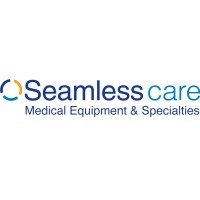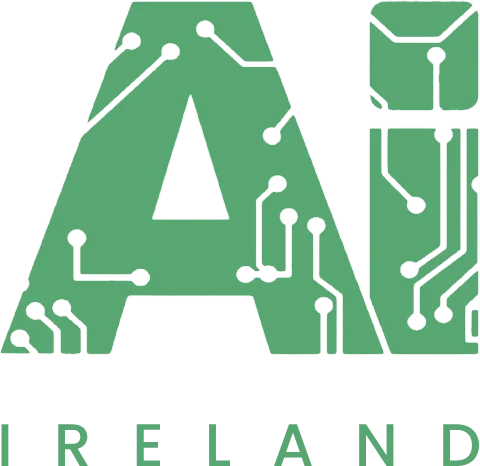SeamlessCARE Limited
Nominated Award:
Best Application of AI in a Startup
Website of Company (or Linkedin profile of Person):
https://seamlesscare.ie/

seamlessCARE Ltd. was co-founded by Dr Aviva Cohen, Dr Cagri Cubukcu and Ian Kennedy and incorporated on 26th May 2021. We received €350,000 investment form Angel Investor Dr Frank Dolphin, former Chair of the HSE. This was matched by an additional €350,000 from Enterprise Ireland.
The company originated from Aviva’s three-year ASSISTID/Marie Curie post-doctoral research Fellowship in University College Dublin and Queens University Belfast from 2016 to 2019. Her research was initially funded to address a lack of future planning by family carers but quickly progressed to include inefficiencies within existing care plans that often lead to time wasting, reduced safety, increased costs and other difficulties. Aviva’s research also identified many sources and consequences of poor communications. Ian was employed as a research consultant for sections of this Fellowship and worked on the project throughout. This Fellowship was also supported by Respect, DOCTRID and Daughters of Charity, one of Ireland’s largest care providers for people with severe and profound disabilities.
From 2019-2020 Aviva and Ian worked pro-bono and continued to engage in extensive market and customer focused research. In 2021 Çagri joined the team and carried out further research on the HL7 FHIR framework as well as digital security, artificial intelligence (AI) and international technical trends in the delivery of health care. In 2021 we began an Enterprise Ireland Commercialisation Fund and the seamlessCARE team continued to build on this foundation.
Together we developed an AI application called Empathic. This is a mobile app and API that helps non-verbal people to independently communicate up to 10 emotions. It uses AI to interpret short recordings of non-verbal vocalisations. It can support people with communication difficulties due to autism, stroke, dementia, intellectual disability and a wide range of other conditions. You can also create an archive of past recordings to help others understand how each person communicates emotions such as excitement or frustration. We tested extensively with day care, residential care and education providers in addition to families. We engaged in customer discovery, speaking with stakeholders in health care and home care as well as families and service users. Part of this customer discovery was supported by the Ireland Funds Business Plan competition who presented seamlassCARE with an award.
Data gathering and test participant feedback strongly indicates that Empathic will make a significant and measurable difference in their lives. In particular they emphasised the reduction in challenging behaviours and the reduction in risk to care providers and service users.
Empathic is Inclusively designed. It has accessible user interfaces and meaningful functionality that emerged from the end users’ real needs. The seamlessCARE team did not develop a set of technologies and then search for a good fit to monetise them. We began with an intimate understanding of the customer, the end user, the market and the potential. Armed with this deep knowledge, we developed applications that fit the market properly and enhance lives.
Reason for Nomination:
Empathic addresses a range of problems, many of which, cascade from one central problem: typically non-verbal people cannot make themselves understood or they can only be understood by one primary care provider. When a person cannot be understood it often leads to frustration that can manifest as challenging behaviours, this is typically compounded by underlying conditions such as autism, brain injury or learning disabilities. This sometimes results in harm to caring staff, family members, self-harm or falls. For example, there are approximately 1000 assaults on hospital staff per year in the UK (Russell:2018) which can cause injury and necessitate higher patient/staff ratios. ‘Behaviours that challenge, such as aggression and self-injury, are presented in 10-15% of people with learning disabilities’ (Emersonet:2013b).
There are numerous consequences of these challenging behaviours including the cost of lawsuits, problems of staff retention, sick days due to injuries and multiple staff members required to work with a single volatile individual. In addition, family care providers are more likely to move their loved ones to institutional care at a significant cost to the state. Poor communication and challenging behaviours also contribute to poor quality of life for the service user and for their professional and family care providers.
Empathic is available as a mobile app and as an API. It works by recording up to 10 seconds of a non-verbal person’s vocalisations. Then pre-trained artificial intelligence interprets up to 10 emotional states such as happy or confused. The AI can also learn about each individual user and the account holder can customise the AI using accessible interfaces.
The account holder can choose to add Companion users. A Companion user can be anyone who interacts with the non-verbal person. Typically a Companion user does not always understand the non-verbal person’s communications. Empathic can help them to better understand how the non-verbal person feels. Companion users can record the non-verbal person in order to understand their emotional state. They can also review the recordings made by the account holder; this can help them to learn how a person sounds when they are experiencing emotions such as excitement or frustration. However Companion users cannot customise the app, only the account holder can help to train the artificial intelligence and enhance its accuracy for a non-verbal user. Empathic mobile app underwent over nine months of Closed Beta testing. Open Beta testing begins in September 2022; this will increase the accuracy of the AI and allow for extensive testing. Following this, Empathic will be available for purchase via the Apple app store and Google Play where families and institutions can purchase low cost subscriptions. A tiered licencing alternative will be available for institutions.
Empathic is unique. It would be difficult to duplicate because it requires large numbers of data samples from non-verbal people. To gather these samples, busy staff and family carers must make multiple recordings over many months. Aviva was able to gather this data because of her extensive network within the caring sector. Many carers only agreed to participate because they know that she had been a family carer for 14 years following her partner’s stroke in 2006 which rendered him non-verbal.
Every participating institution insisted on an Ethics application; this is time consuming and complex. Often, ethics was only granted because UCD and QUB had already approved our Ethics. Each institution explained that they typically do not grant Ethics to any trading company. This presents a barrier to other companies collecting essential data if they wanted to replicate Emphatic’s AI models.
The intensity of competition will change over time as the majority of healthcare moves to the HL7 FHIR Framework and also as AI becomes more prevalent. However, the data we use to train our AI is difficult to gather and we also have first mover advantage. As the industry develops we intend to remain cognisant of new developments so that we remain ahead of the competitors.
Additional Information:
SeamlessCARE Empathic does not have any competitors, it is a unique AI-powered audio analysis application. There are assistive technologies that help a non-verbal person to communicate; they include eye gaze, speech rehabilitation and PEX or communications systems. All of these systems require a level of cognitive ability and effort that is not appropriate for a large cohort of non-verbal people. They also require time, training, and often, a considerable financial investment. None of these alternatives enable non-verbal people to independently communicate their emotions as quickly or accessible as Empathic.
Empathic requires less than 10 seconds of time to understand up to 10 emotional states at low cost. It is the only application that can interpret the emotional state of a non-verbal person using audio recordings. The only apps that come close are a non-commercial research project called Chatterbaby in UCLA that tries to interpret the cries of babies. There is also a dog collar and app combination in Korea called Petpuls that claims to interpret dog barks.
seamlessCARE products are built on the HL7 FHIR Framework which has recently become the global standard for interoperable healthcare. This means that Empathic can be made available as in API for larger health care providers, in addition to being available as a mobile application.
As Empathic is part of seamlessCARE’s interoperable framework, there is an easy flow of data in real time. Therefore, information can be passed instantly between acute hospitals, care centres and home care providers.
Files:
